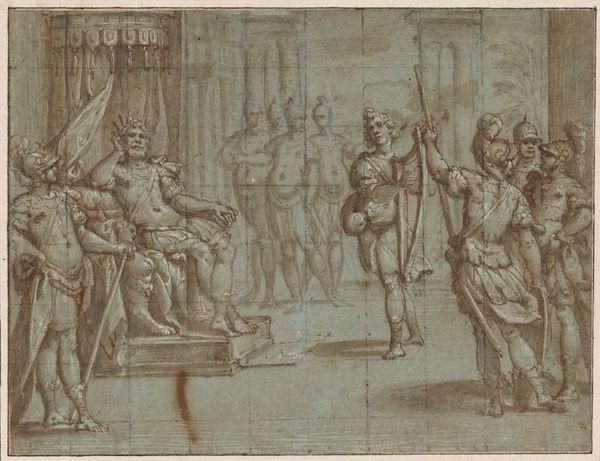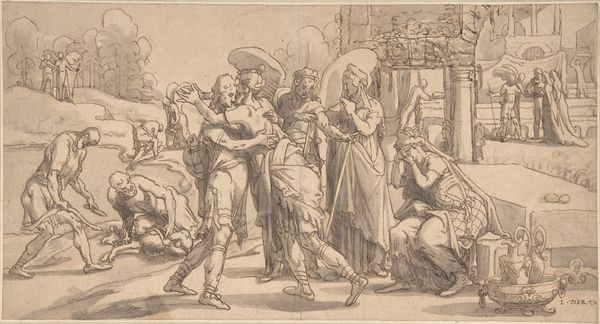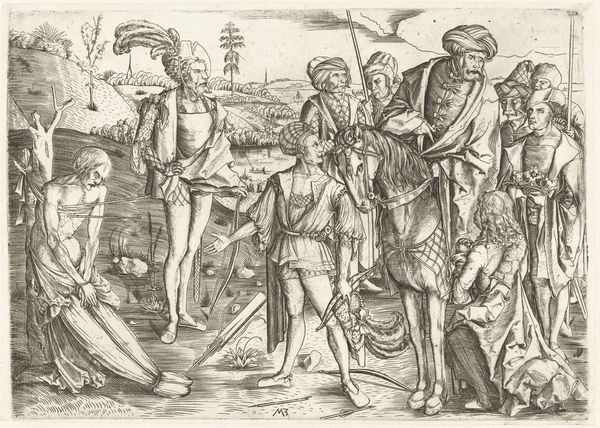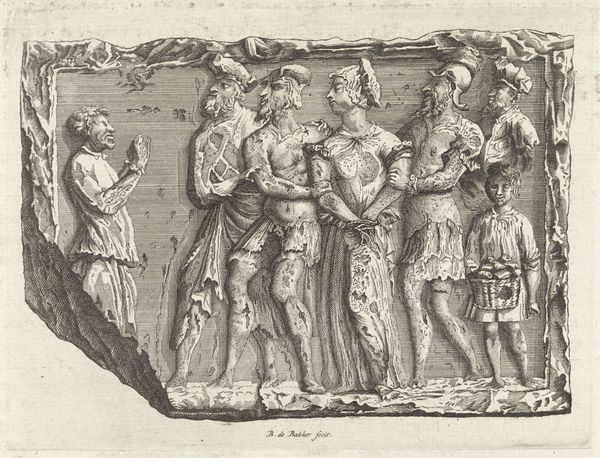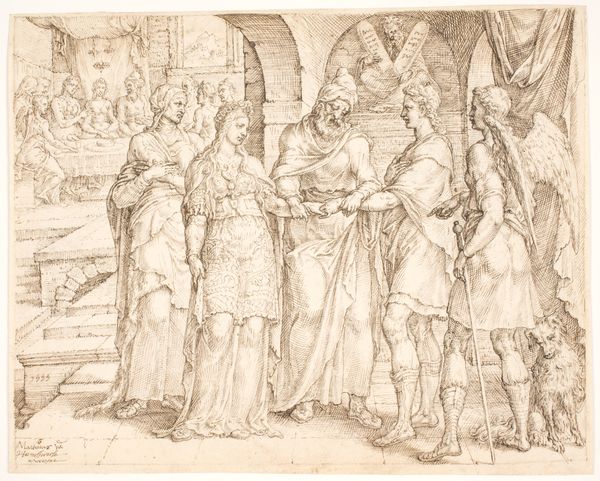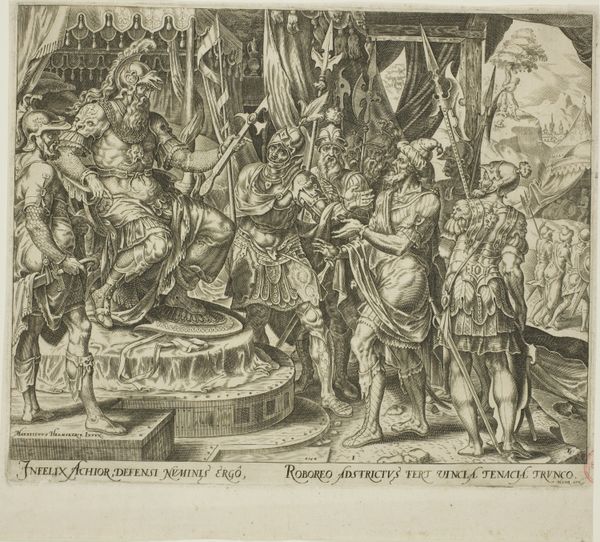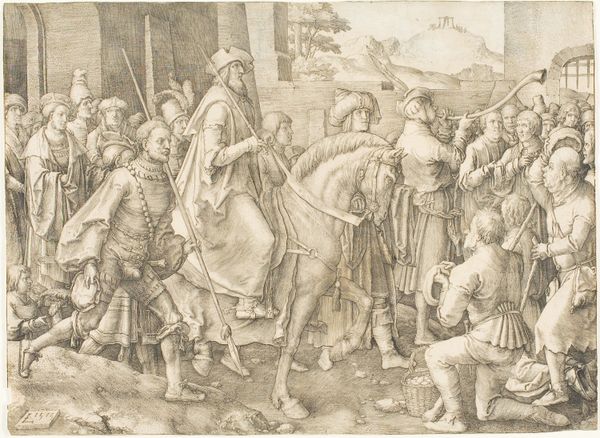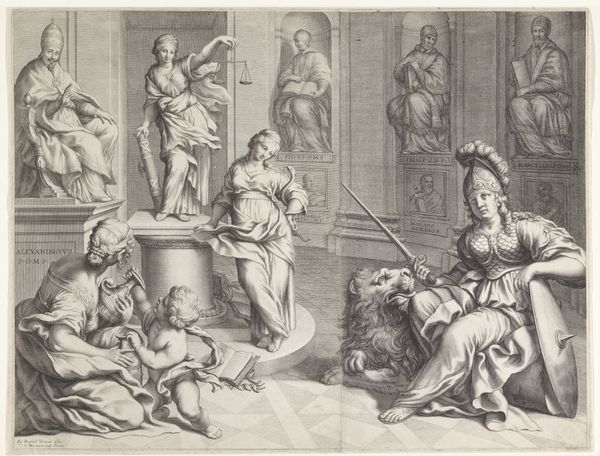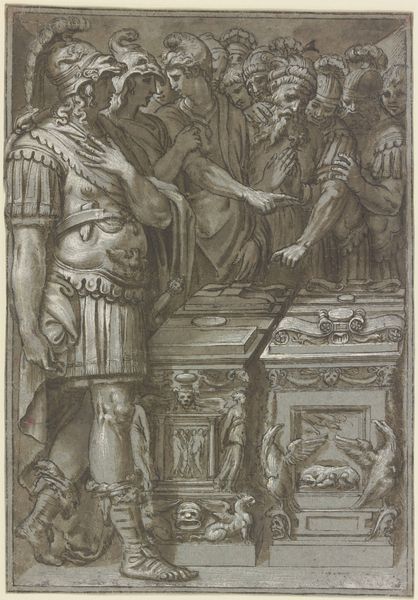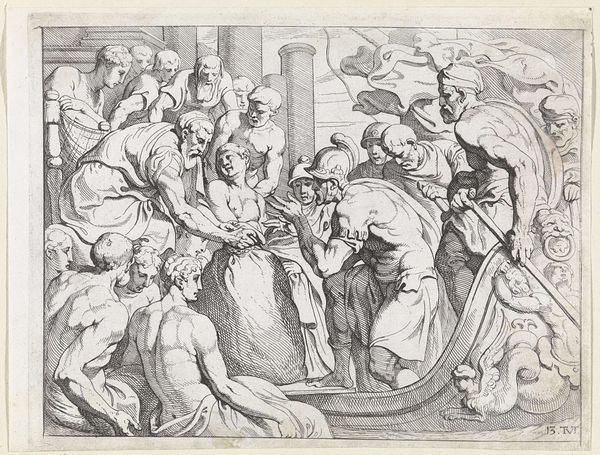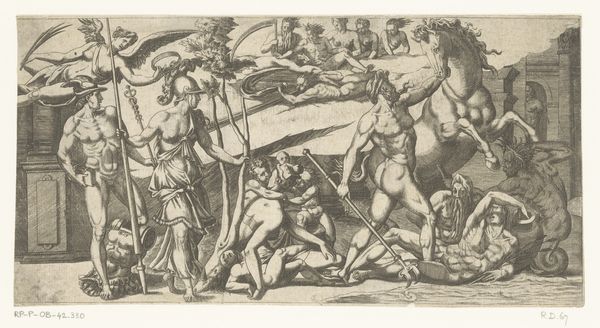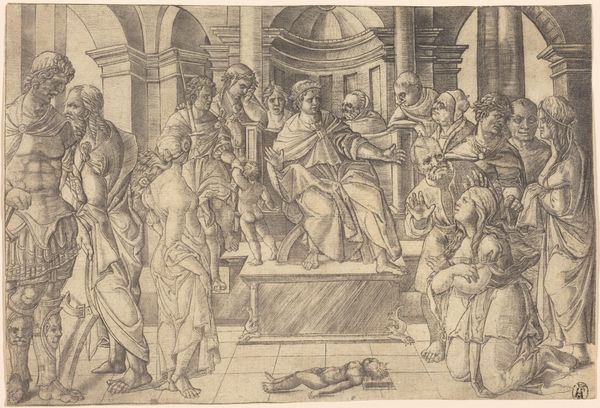
drawing, print, paper, engraving
#
portrait
#
drawing
#
medieval
# print
#
classical-realism
#
figuration
#
paper
#
line
#
history-painting
#
italian-renaissance
#
engraving
Dimensions: 291 × 314 mm
Copyright: Public Domain
Curator: Looking at Giovanni Antonio da Brescia's "Christ before Pilate," executed around 1500-1505, now held at the Art Institute of Chicago, I'm struck by how power and authority are visually constructed in this piece. The Roman figures tower over a vulnerable, almost ethereal Christ. It's a stark depiction of injustice and the abuse of power. Editor: Immediately, I am drawn to the stark contrast of textures; the smooth, almost porcelain skin of Christ against the harsh, metallic glint of the soldiers’ armor. Even Pilate's robes, though flowing, appear severe due to the artist’s precise engraving style. Curator: Absolutely. Consider how the Italian Renaissance was grappling with humanist ideals while still deeply entrenched in religious and social hierarchies. This print makes me think about contemporary carceral systems; how the legal apparatus perpetuates marginalization even when professing innocence, symbolized by the Latin inscription declaring Pilate finding "no cause of death." Editor: That inscription becomes so powerfully ironic. The symbolism is rich, layered. Flags, spears, the very positioning of Pilate above the crowd all serve to create an unambiguous hierarchy. And yet, the suffering of Christ radiates beyond his immediate tormentors. Curator: I agree. The power dynamics are blatant, the soldiers framing him, and even Pilate literally pointing towards his fate, it speaks to systemic violence and oppression, and what happens to people perceived as defying societal structures. We should examine the relationship between those wielding the weapons of state and its chosen targets. Editor: What persists throughout interpretations of this scene, for me, is the motif of accusation and innocence. Even Pilate, perched atop his platform, embodies internal conflict – an ambivalence amplified by the sea of accusing faces turned against Christ. His gesture is almost defensive. Curator: And within that perceived innocence, we see the vulnerability of marginalized bodies that continue to be judged based on predetermined prejudices. Editor: The artist employs a linear engraving style which almost gives the scene a dreamlike quality, yet reinforces how powerfully this symbolism transcends that of its historical context. It taps into timeless anxieties. Curator: Thinking through issues of power, social justice, and religious themes feels very urgent given our contemporary discourse. Editor: It allows a reconsideration of how these very narratives impact us through persistent visual reminders that go far beyond any period.
Comments
No comments
Be the first to comment and join the conversation on the ultimate creative platform.
